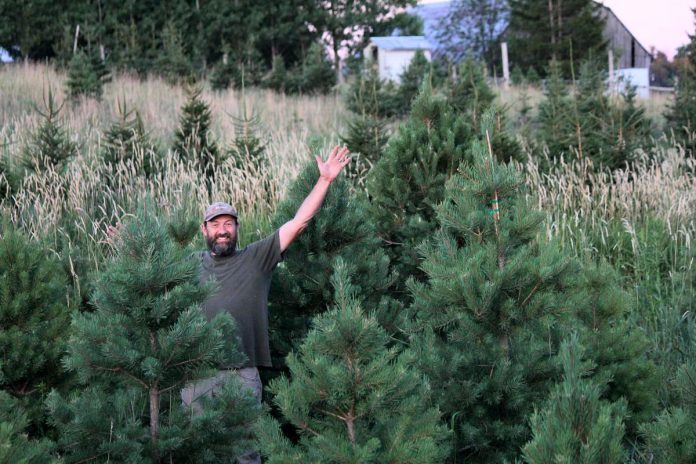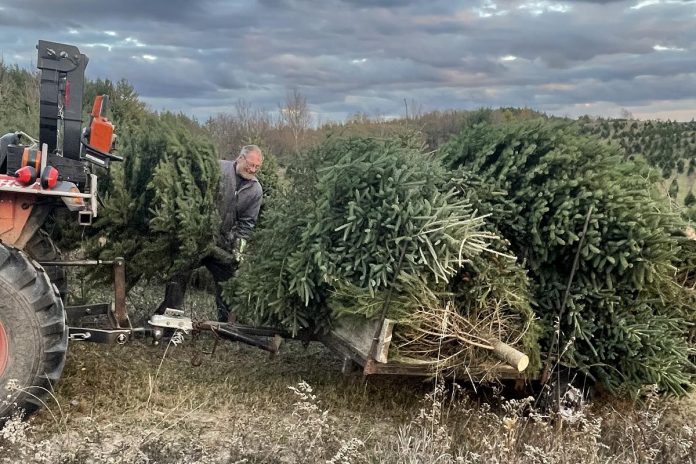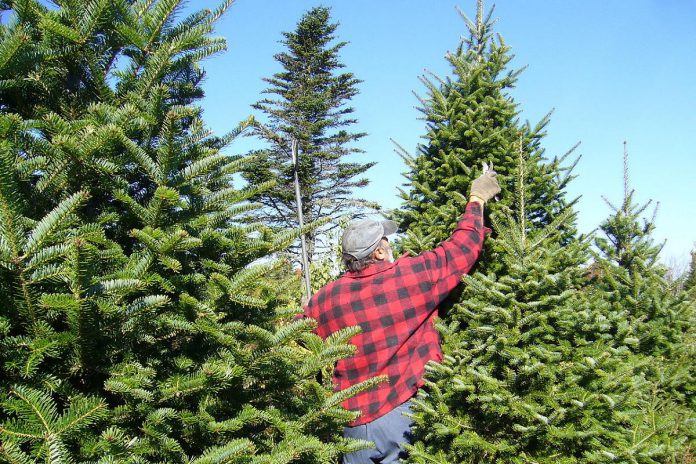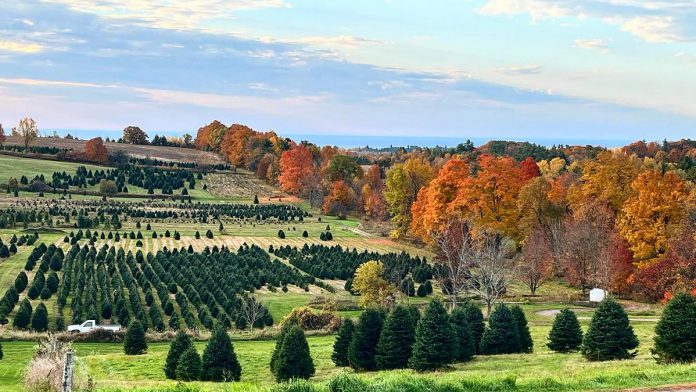
It’s going to be a green Christmas this year when it comes to freshly harvested Christmas trees in the Kawarthas region, with local tree farmers reporting healthier and fuller trees.
While a dry summer in 2023 led to a limited supply of healthy trees that winter, resulting in some local tree farms running by appointment only, that does not seem to be an issue this year.
According to Dan Vanderzwet of Potash Creek Farms, customers looking to cut their own can get some “great looking pine trees” when visiting the Omemee farm this season.
“There were definitely some drought issues last year that are not bogging us this year because there was lots of rain,” he says. “Our farm has been growing for many years and we have more trees available this year than any past years.”
Powell’s Trees, located just south of the Kawarthas region in Bowmanville, has had similar success, with owner George Powell noting the wetter season has led to “full” trees.
“Some years when it’s a dry summer the trees will be about yellow, but this year they’re very green, so we’re lucky we had proper rain,” he says, adding that the weather means a great start for future Christmas trees as well. “We planted 5,000 seedlings and every one of them is doing well and growing. We’re blessed.”
For those looking for a lush and green locally grown Christmas tree, there are 11 tree farms in and just outside the Kawarthas offering both cut-your-own and pre-cut options.

In the Kawarthas, you can visit Oscar’s Tree Farm in Campbellcroft, Oake Family Tree Farm in Cavan-Monaghan Township, Barrett’s Christmas Tree Farm in Cobourg, Little Lake Christmas Tree Farm in Colborne, The Carroll’s Christmas Tree Farm (formerly J&D Christmas Trees) in Colborne, Dawson Tree Farm in Millbrook, Potash Creek Farms in Omemee, and A Wee Tree Farm in Fenelon Falls.
Just outside the Kawarthas, farms open to harvest your own trees include Powell’s Trees in Bowmanville, Prestonvale Tree Farms in Courtice, and Hope’s Christmas Tree Farm in Enniskillen.
As for Murray Tree Farm in Apsley, it went on the market earlier this year and has recently sold, marking the closure of the family tree farm.
For tree farm addresses, hours, available tree species, prices, and websites, check out the following map.
View a larger version of this map.
Why buy a grown-in-Ontario Christmas tree?

Besides helping the local economy (more than 600 Christmas tree farms in Ontario generate around $12 million), farm-grown natural Christmas tree have other benefits.
Christmas trees are one of the most environmentally friendly crops. It takes up to 10 years to grow each tree and, during this time, the trees remove carbon dioxide and airborne pollutants from the atmosphere (up to 13 tons per acre!) and provide protective havens for a wide variety of birds and mammals. It’s also a sustainable crop — for every tree that’s harvested, at least three seedlings are planted in its place.
Buying a tree from a nearby local farm is also more environmentally friendly than buying one shipped in from another part of the country, such as Quebec or the East Coast.
Natural Christmas trees are also 100 per cent recyclable and biodegradable. Most municipalities — including those in the Kawarthas region — collect discarded natural Christmas trees and chip them for use as mulching materials.
Discarded natural trees can also be used as bird feeders, wood products can be made from their stems, or they can be used as wildlife cover in fish ponds and woodlots.
Common types of Christmas trees

If you do decide to harvest your own tree this year (or buy a pre-cut one), here’s a quick primer on the most common tree species available:
Balsam Fir – The Balsam Fir holds its dark-green needles well and is a good choice if the decorated tree will be left standing for a longer period of time. Balsam fir branches work well for lighter Christmas ornaments, and the tree has a strong fragrance.
Scots Pine (Scotch Pine) – The Scots Pine is a thick and hardy tree. It resists drying and holds its needles well over the holidays. However, the needles are tough and very pointy.
Fraser Fir – A Christmas tree that’s become very popular in recent years, the Fraser Fir is known for holding its attractive dark blue-green needles and its pleasant scent. Fraser Firs are generally more expensive than other trees as the species has a much longer growing cycle.
Norway Spruce – The traditional Christmas tree in Britain, the Norway spruce is attractive but has a tendency to drop its needles, particularly towards the end of the holidays — especially if the tree is not cut fresh and kept properly watered.
White Spruce – The dense foliage and symmetrical proportions of the White Spruce make it a very beautiful Christmas tree. The tree has a strong scent and its strong slender twigs hold ornaments well. However, the White Spruce is very thirsty and must be watered regularly to prevent it from losing its needles.
Caring for your tree

After you get your tree, follow these tips to keep it fresh and safe:
- If you aren’t setting up the tree immediately, store it outdoors. Keep it in a protected area, away from the wind and sun, to help the tree retain its moisture (an unheated garage is ideal, particularly to keep the tree free of snow). If you plan to store it outside for several days, make a straight cut across the butt end of the tree about one inch from the end, place the butt end in a container of water, and store the tree upright.
- When you bring the tree into the house for decorating, make another fresh cut across the trunk, about an inch from the original cut.
- Trees can drink up to four litres of water per day, so be sure to use a large stand that can hold that much water. Check the water level daily and supply fresh water as needed. Don’t allow the water level to drop below the bottom of the tree, as a seal will form on the bottom and the tree will stop absorbing water (you’ll have to make a new cut).
- Use only fresh water. Don’t add sugar, molasses, bleach, honey, floral preservatives, or other substances to the tree’s water. Experts agree these additives do nothing to maintain the freshness of the tree.
- Place your tree away from fireplaces, radiators, television sets, and other sources of heat. Turn off the tree lights when you leave and before you retire at night. Under no circumstances should you use lighted candles on a Christmas tree.
- A well-maintained tree should normally remain fresh at least three to four weeks before drying to an unacceptable level. Test the dryness of the tree by running your fingers across the needles. If they break easily or fall off in your hand, the tree is dry and should be discarded.



























